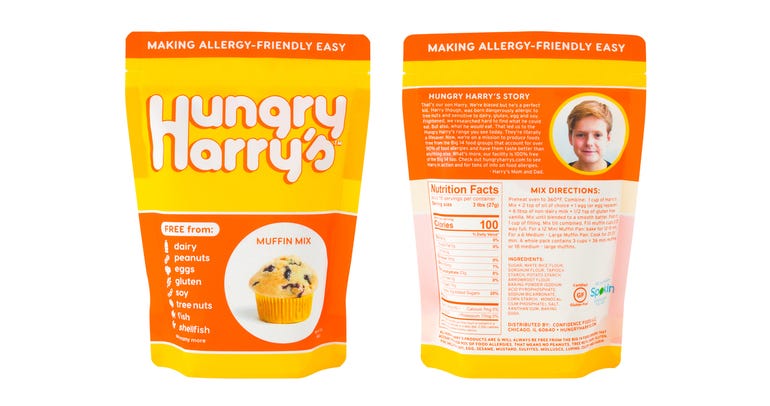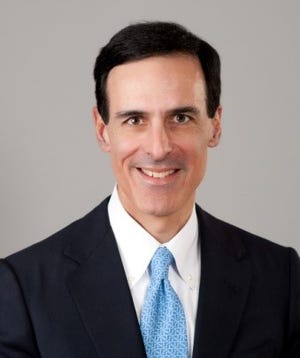7 ways to compete with private-label brands7 ways to compete with private-label brands
As more consumers and retailers purchase private-label brands, here’s what natural products entrepreneurs can do to maintain their edge.
September 28, 2020

As more consumers and retailers shift their focus and shelf space, respectively, towards private-label products, plenty of small businesses have been left wondering how they can best compete and stay relevant.
Any new food or startup is already an inherently better product line than a private label because the founders are trying to solve a problem they usually inherently understand, says Rob Lowe, co-founder of Hungry Harry’s, a Chicago-based company makes allergen-friendly line of baking mixes.
“When a founder sells something it’s done with a passion that’s unmatched by larger companies so that’s something that puts you ahead of the game,” he says.
Many times, corporations have a hard time replicating and scaling a product that needs to be mass produced instead of created for a targeted audience, says Lowe, whose company launched in 2019 and just signed with KeHE to scale its distribution outside of the Midwest.
Still, competing against private-label brands isn’t easy.
1. Make sure your brand's position is unique and defensible.
For Hungry Harry’s that’s meant not just being gluten-free or dairy-free but free of 14 different ingredients that are made in a dedicated facility free of all the allergens. That’s a lot more than companies touting products that are free of the top eight allergens, some that are also made on shared product lines.
“Have a unique proposition,” Lowe says. “For us its being free from the 14 and we taste like regular food.”
Lowe says start-ups need to make sure their brand is defensible by having multiple differentiated positions—at least four, but maybe five or six things that are unique.
“Within 12 months of your success, you’ll lose three of them because people will copy you,” Lowe says. “So have two or three points that are defensible for a long time.”
Lowe also cautions that many retailers will pressure startup manufacturers to get something new to them every six to 12 months. Instead make sure the product being made is absolutely right to make it more resistant against private label and challenger brands he says.
2. Stand out with distinctive packaging that shares a story.
Hungry Harry’s packaging shares the personal story of Harry, the son of Lowe and Sarah Matheson, co-founder and creative director of Hungry Harry’s, who was born dangerously allergic to tree nuts and sensitive to dairy, gluten, egg and soy.
“We choose yellow for one reason,” Lowe says. “It stands out on the shelf from across the store.”
Instead of putting their allergen-friendly list on the back of the packaging they moved it to the front and call attention to the text by using large font.
“We scream out at least eight to nine free things plus many more,” Lowe says. “We understand that packaging is the most efficient media you have. It doesn’t matter what you are selling, you will never get better ROI from any marketing activity you do than your pack.”
3. Understand your customer base.
 Ken Harris (left), the former chairman of Enjoy Life Foods who is the managing partner of Cadent Consulting Group, a sales and marketing consulting firm, says natural food and CPG brands need to have a clear understanding of their customer base.
Ken Harris (left), the former chairman of Enjoy Life Foods who is the managing partner of Cadent Consulting Group, a sales and marketing consulting firm, says natural food and CPG brands need to have a clear understanding of their customer base.
Many retailers make incorrect assessments about what consumers are actually purchasing or hope to purchase a product.
“It can be surprising to retailers,” Harris says.
For example, maybe a brand is tagged as a vegan product. It can help if a business owner can explain that vegan consumers for their product only represents 25% of their total business and the remaining 75% are consumers who are walking in and out of a store every day, he says.
Understanding what consumers are actually buying a product helps a company sell its story, its value proposition and how it will compete against other natural brands on the shelf, Harris says.
To compete against private-label brands, make sure the product satisfies a need not just a want, Lowe says.
“If you solve a need, then your company builds a largely price and demand inelastic product,” Lowe says, which helps companies to stay relevant regardless of trends.
4. Grow an engaged community that will champion your brand.
Once a month Hungry Harry’s sends one of their baking mixes to a group of home bakers who encompass various ethnicities, ages and demographics across the United States and asks the bakers to bake for the brand. The photos are then shared on social media, Matheson says.
“We have this continual story about different families and different allergies in different parts of the country all talking about how Hungry Harry’s is helping solve a problem,” Matheson says.
5. Understand your brand’s velocity story.
How does your natural brand sell against other natural products? Understand how your brand sells and customize it for each retailer, Harris advises.
For example, maybe the product sells exceptionally well at a natural foods store and has a velocity of turning over the product 15 times a week. “If you go to a traditional conventional retailer like Sprouts or Whole Foods, the retailer is going to say, ‘That’s great what you’ve done but that’s not me. What are you suggesting your velocity will be in our stores,’” Harris says. “If you don’t have an answer that’s a problem.”
Conversely, if a brand goes into a retailer like Kroger, which has a well-established natural food business and wants to compete against its Simple Truth and Simple Truth Organic brands, founders need to understand the velocity of comparable natural food products and how those products sell in Kroger.
“Be able to say, ‘You sell x, y and z. This product also sells in that natural foods space and we believe this is what the velocity will be for you,’” Harris says. “It’s all about making it relevant to retailer.”
Companies who use their velocity and understanding of their consumer can create a “super compelling message” he says.
Don’t confuse a retailer’s desire to make natural foods more available to customers as a carte blanche license to get distribution. If a business can’t clearly articulate its velocity or customer base, the retailer likely won’t be bothered with considering a new product, Harris says.
“The shelves are changing the way the retailers are looking at the business and the opportunities the retailers see in natural foods is growing, but you still have to have the right message,” Harris says. “Retailers are mercenaries. If they feel like they have to take something out to put something in, your story has got to be compelling.”
6. Consider these buzz words.
Trends come and go. For natural food brands looking to capitalize right now, Harris suggests having a clean deck that lists simple ingredients to stand out.
Same with using phrases such as “nutrient-dense,” “nutrient rich” and “naturally sourced” which Harris predicts will be around for the next three to five years while trends like “plant based” will continue for another year or two.
7. Be able to quickly scale.
Build scale into the business model and processes into a startup. Doing so will help to compete against private-label brands Matheson says.
Too many startups and small brands try their product at a farmer’s market or a single supermarket chain but fail, Matheson says, when they need to expand and are asked to quickly produce 5,000 units.
Instead Matheson leaned on the corporate background of her and Lowe to establish business processes inside of their startup. They created an operations manual, added Salesforce to help with customer relationship management, social media and email marketing, and found a logistics partner that can ship one pack by UPS or truckloads of pallets anywhere in the country.
That helped Hungry Harry’s to quickly scale in less than a year growing from more than 55 grocery stores—both boutique and Hy-Vee supermarkets in the Midwest—to a distribution contract with KeHE.
“We built scalability into the business from the get-go,” Matheson says. “We are a start-up that thinks like an enterprise.”
About the Author
You May Also Like





